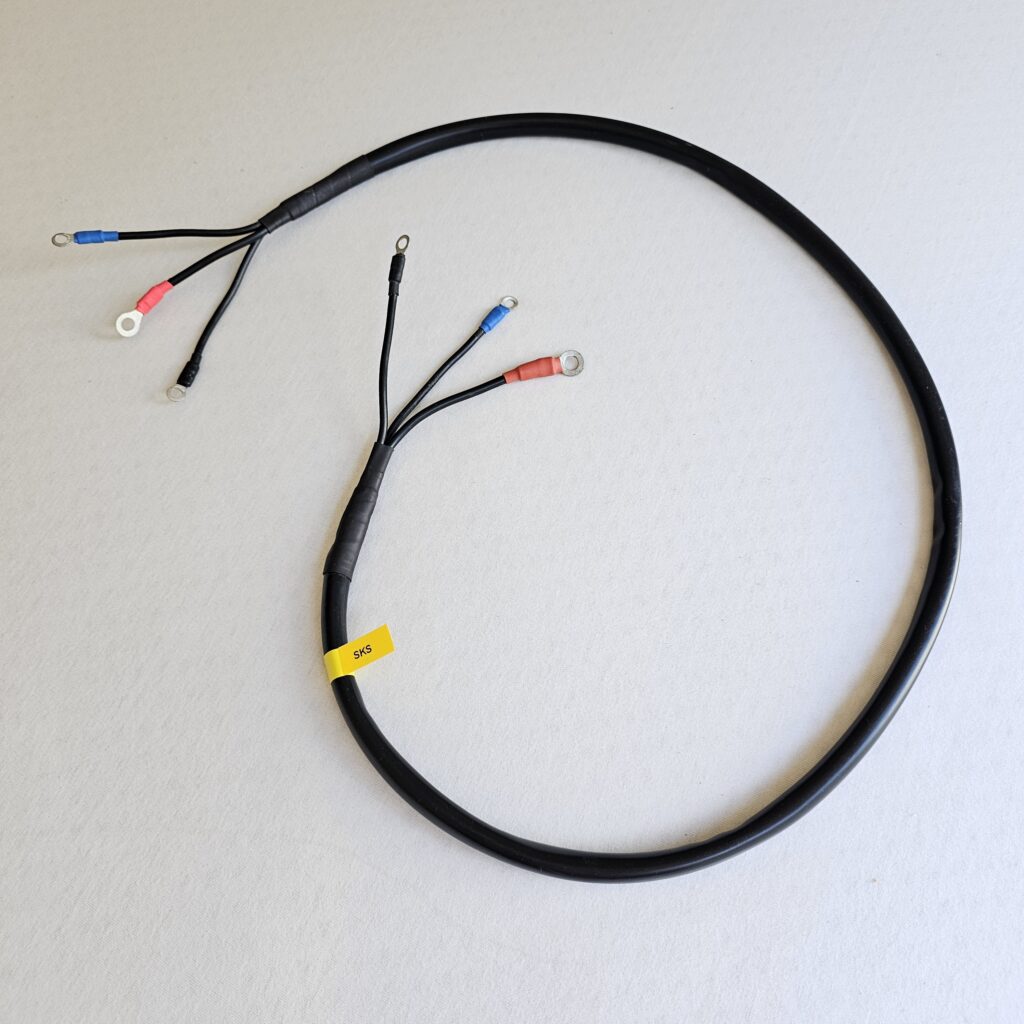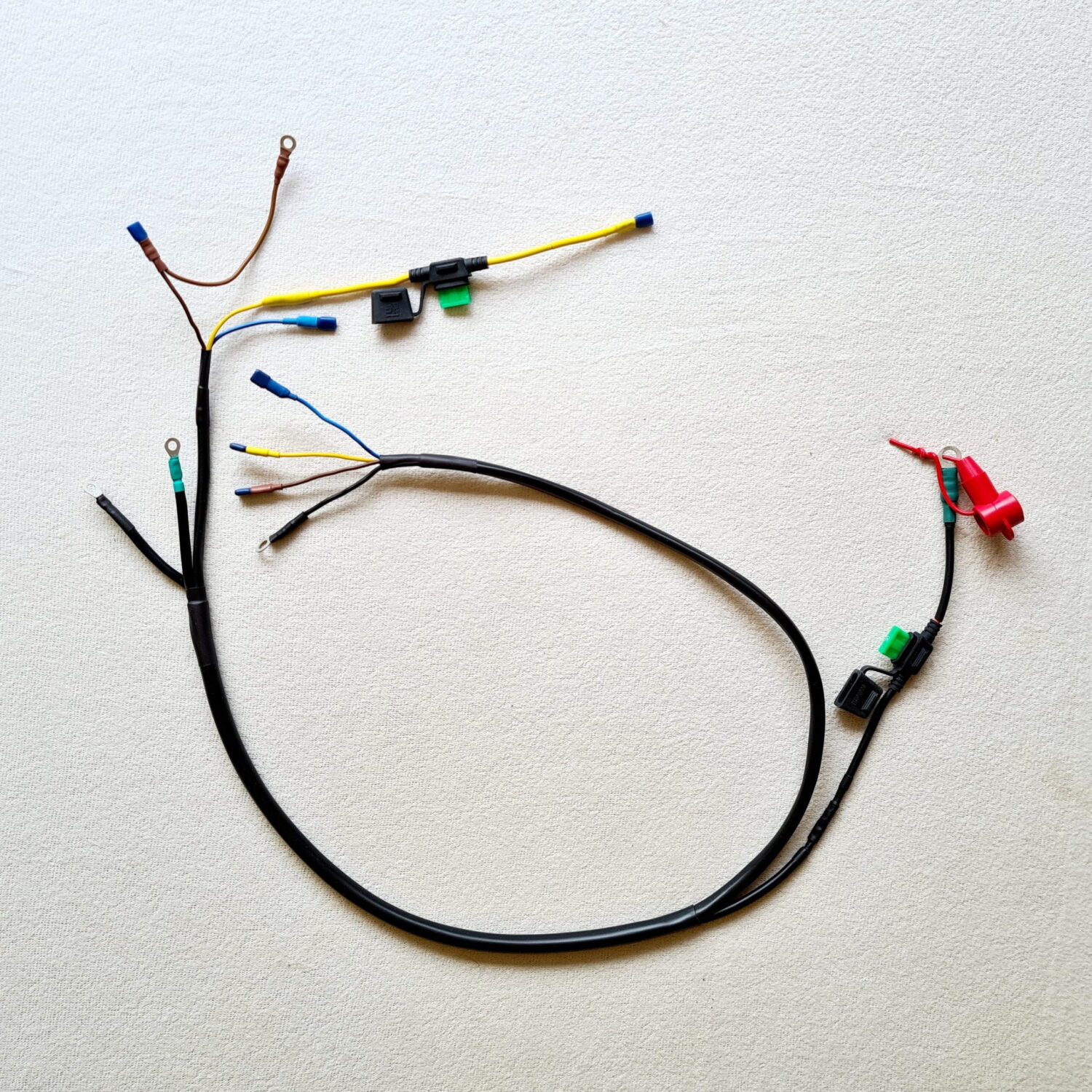Description
What is there to tell about those 3 wires from the alternator to the voltage regulator. It can't be easier. That is disappointing.
In the early years of the Traction, changes to the steering system, exhaust system, wheel brake cylinder, suspension system, etc. were carried out at a tremendous pace. In short, the Traction was far from fully developed and not sufficiently tested to be launched on the market.
Also the electrical diagram did not escape the changes. From 1934 to 1939 there are seven different schemes. From 1945 to 1957 there are only two. From before and after 1952.
In the first years there was no separate alternator wiring harness. The wires, two for the alternator and one for the starter ran all the way to the left, crossed over to the right at the radiator and then back to the alternator and starter. Electrically a bad choice. The wires, with currents up to 20 A, were unnecessarily long and had unnecessary internal losses due to the resistance. Until 1939 the so called three-brush alternator was used. The "box" on this type of alternator is often mistaken for a voltage regulator, but it is just that. It only contains a relay to disconnect the battery from the alternator, so the battery will not drive the alternator as an electric motor.
From 1945 the dynamo as we know it today was installed with a real voltage regulator with three functions. Citroën has three brands of dynamo: Ducellier, Paris Rhône and from Citroën itself. So for the first time there is a separate dynamo with the 2-pin connector block on the bulkhead below the voltage regulator. This tree also contains the wire that supplies the battery voltage from the starter contact to the ammeter. With all the changes made in 1952, nothing changed in the alternator wiring harness. Finally, in April 1954 a simplification is carried through. The 2-pin block disappears. The alternator wiring harness consists of only three wires: field, earth and DYN and connects the alternator directly to the voltage regulator. The wire in the dashboard tree from the ammeter to the 2-pin block is extended and attached directly to the starter contact. As of now, the alternator wiring harness version is without a 2-pin block.
The difference in length of the wiring loom for an 11BL compared to an 11BN is so minimal that the same wiring loom can be used. SKS does supply a slightly longer wiring loom than the original. Many Tractions are now driving with a different voltage regulator and sometimes one or more connections are at the top of the regulator. On the other side of the alternator there is also a bit more length so that it can hang free in the air as far as possible from the alternator housing, manifold, radiator and exhaust pipe.
The alternator wiring harness for the 15-Six is much longer because the engine block is longer, but the alternator is also on a different place.
Finally something about the wear and lifetime of wiring. Wire looms wear out due to internal heating caused by the current flowing through them. That is unavoidable. But they also wear because of external influences. The temperature to which the wire is exposed makes the insulation dry out and eventually crumble. The latter can be prevented. Often the dynamo wire harness lies at the three connections on the house of the dynamo and this can get pretty warm, both from the inside by the working of the dynamo, but also by the heat emission of the manifold, the exhaust and the radiator. Secure the dynamo boom with cable ties so that it does not make contact with these heat sources and stays as far away from them as possible. You prolong the life of the cable tree considerably with it.
Fuses added
SKS supplies all dynamo booms for the Traction in two options: 100% same as the original or a version with fuses.
This is a main fuse. If the engine is not running, or is idling, the voltage of the alternator is too low. The voltage regulator then disconnects the alternator from the battery. In this situation the battery is the power supplier. The main fuse is placed in the ignition switch wire on the starter motor. On the dynamo wiring harness after 1954 (without block) this fuse is placed in the dashboard harness.
At sufficient rpm the alternator will start supplying power and will take over. That is why a main fuse is placed in the wire, DYN, to the regulator. In case of a short circuit between Plus 6 V and ground, one or both fuses will melt. The Traction will then stop completely, because there is no spark anymore. Better this than a burned out wiring harness or even worse.
The DC dynamo delivers a maximum of approx. 20 A. The value of the placed fuse is 30A.
For an alternator it is better to increase the value to 40A. An alternator delivers more power and after a long start-up the alternator will charge the battery with a higher current.







Reviews
There are no reviews yet